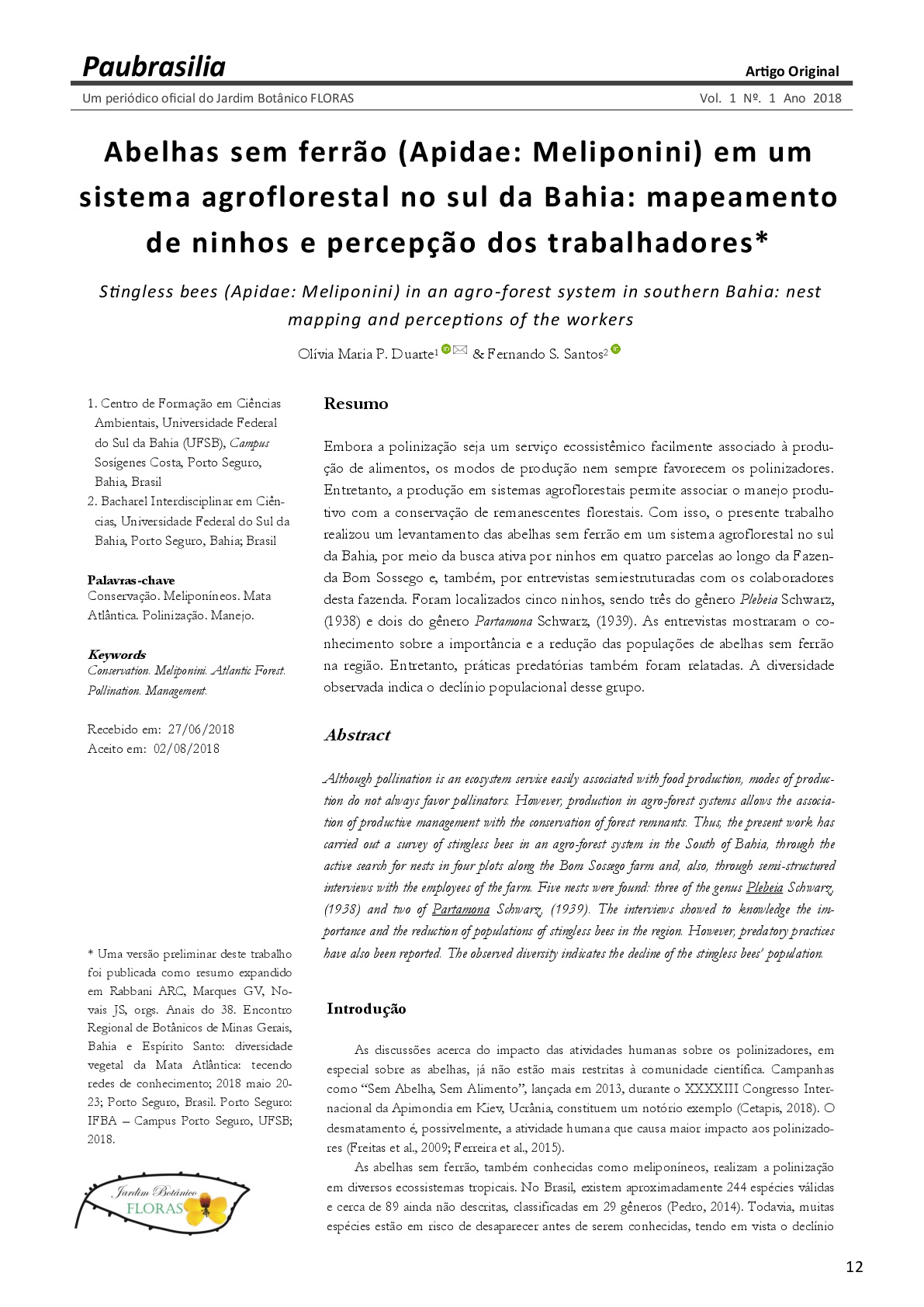Stingless bees (Apidae: Meliponini) in an agro-forest system in southern Bahia
nest mapping and perceptions of the workers
DOI:
https://doi.org/10.33447/paubrasilia.v1i1.3Keywords:
conservation, Meliponini, Atlantic Forest, pollination, managementAbstract
Although pollination is an ecosystem service easily associated with food production, modes of production do not always favor pollinators. However, production in agro-forest systems allows the association of productive management with the conservation of forest remnants. Thus, the present work has carried out a survey of stingless bees in an agro-forest system in the South of Bahia, through the active search for nests in four plots along the Bom Sossego farm and, also, through semi-structured interviews with the employees of the farm. Five nests were found: three of the genus Plebeia Schwarz, (1938) and two of Partamona Schwarz, (1939). The interviews showed to knowledge the importance and the reduction of populations of stingless bees in the region. However, predatory practices have also been reported. The observed diversity indicates the decline of the stingless bees’ population.

Downloads
Published
How to Cite
Conference Proceedings Volume
Section
License
By submitting manuscripts for publication in the journal, authors expressly agree to the following terms:
1 - Authors retain copyright on their manuscript and grant the right of first publication to the journal, with the work simultaneously licensed under the Creative Commons Attribution 4.0 International License, allowing it to be shared, as long as authorship and initial publication in Paubrasilia are acknowledged, with proper indication of volume, number (if any), page number (or elocation-id), and year in which the paper was published;
2 - Authors are allowed to enter into additional contracts separately, for non-exclusive distribution of the version of the paper published in Paubrasilia (e.g., publishing in an institutional repository or as a book chapter), provided that authorship and initial publication in this journal are acknowledged, with proper indication of volume, number (if any), page number (or elocation-id), and year in which the paper was published.










